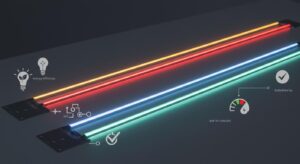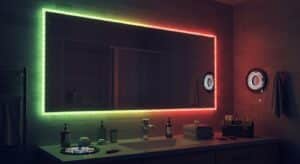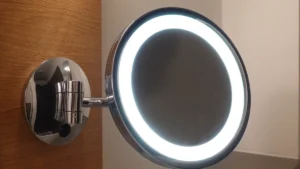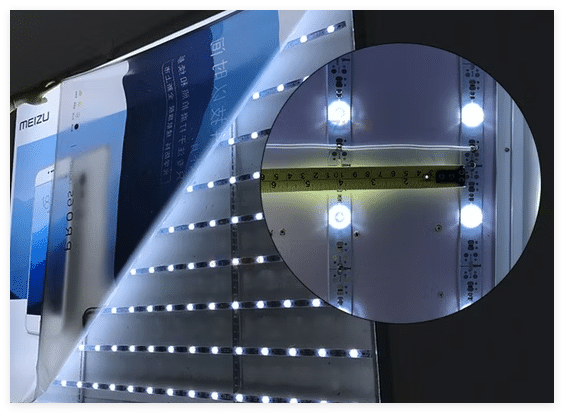
Choosing the best rigid LED bar is important for lighting. Whether for your workspace or vehicle, the right one works better. Strong materials like aluminium and polycarbonate make it last longer. These also help reduce repairs and time without light. Features like smart controls and heat management keep it safe. They also ensure the light stays steady in hard conditions. A good LED bar improves visibility, saves energy, and lasts a long time.
Key Takeaways
Know what you need before picking an LED bar. Think about its use, like for driving, work, or decoration.
Look at where you will use the LED bar. Outdoor bars must handle dust and water. Indoor bars should look good in the space.
Pay attention to important features like size, beam shape, and plug type. These things decide how well the light works for you.
Understanding Your Needs
Picking the right rigid LED bar starts with knowing your needs. Let’s look at three main points to help you decide.
Purpose and Application
Why do you need the lightbar? This is the key question. Whether it’s for off-road driving, workspace tasks, or decoration, the purpose matters. For example, off-road lightbars must be tough and bright in the dark. Indoor lightbars may focus more on looks and saving energy.
LED lightbars are very flexible. They are used in cars, shops, and more. Studies show LEDs are better than older lights like fluorescent ones. Here’s a comparison:
Factor | LED Performance | Fluorescent/CFL Performance | Winner |
|---|---|---|---|
Directionality | Shines light in one direction | Needs reflectors to focus light | LED |
Efficiency | 37 to 120 lumens per watt | Less than 30 lumens per watt | LED |
Emissions | Wastes little energy | Loses energy as UV radiation | LED |
Failure Characteristics | Slowly dims over time | Flickers before stopping | LED |
Heat Emissions | Produces little heat | Gives off more heat | LED |
This table shows why LEDs are the best for saving energy and lasting longer.
Environment and Conditions
Where will you use the LED bar? The location affects your choice. Outdoor bars need to handle dust, water, and heat. Indoor bars don’t need to be as tough but should suit the space.
For example, workshop bars should resist dust and small bumps. Retail display bars should focus on colour and angle to show products well. Better LED technology now makes it easier to find the right bar for any place.
Here’s how the market for LED bars is growing:
Year | Market Size (USD Billion) | CAGR (%) |
|---|---|---|
2023 | 1.5 | – |
2024 | 1.82 | – |
2025 | 2.19 | 10.59 |
2032 | 3.7 | – |
2034 | 4.99 | 10.59 |
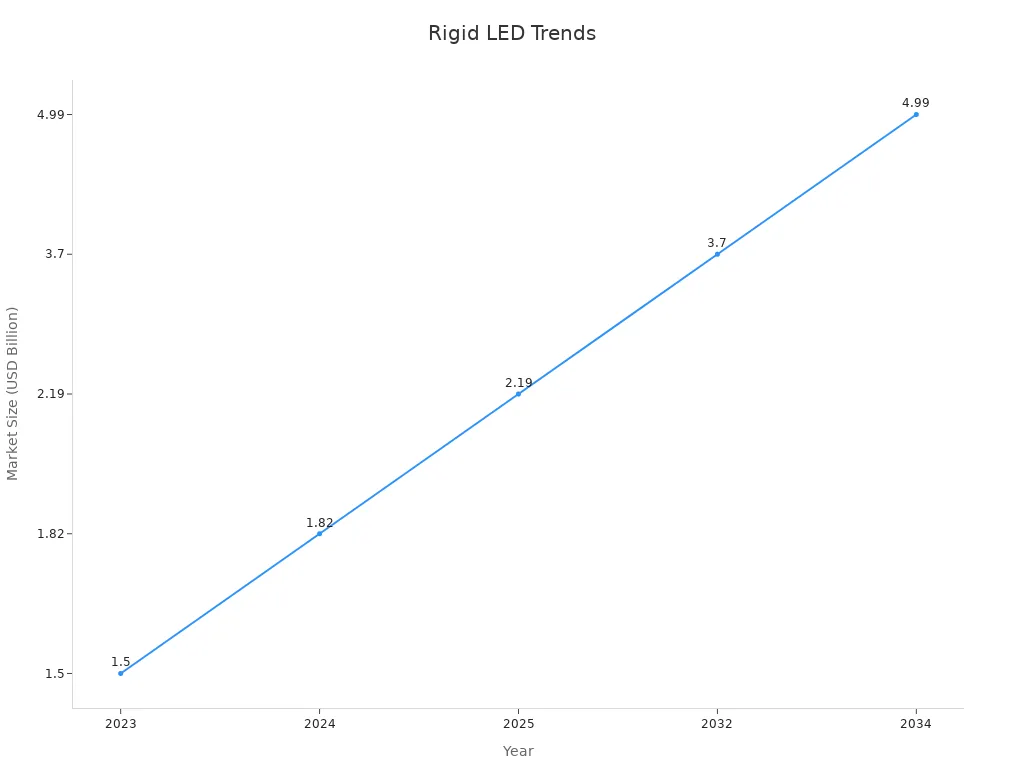
This growth shows more people are using LED bars in different places.
Power and Energy Considerations
LEDs save energy, but how much power do you need? It depends on the use. A bright off-road bar uses more power than a small decorative one. Still, LEDs use less energy than older lights.
LEDs turn most energy into light, not heat. This saves power and keeps them cool, making them safer. Many LED bars now have dimming and Bluetooth features to save even more energy.
If you worry about costs, pick a bar with high lumens per watt. This means it uses electricity well to make light. Choosing an efficient bar lowers bills and helps the planet.
Key Features to Check
When picking the best rigid LED bar, focus on its features. These details decide how well it works for your needs. Let’s look at the main things to consider.
Size and Shape
The size and shape of the lightbar matter a lot. A small, slim bar fits tight spaces. Bigger bars cover more area. Think about where you’ll use it. For example, wide bars are great for vehicles needing far-reaching light. Smaller ones are better for workspaces or displays.
The shape is also important. Straight bars give even light. Curved bars light up wider areas and reach farther. Curved designs are great for off-road vehicles or large spaces needing bright light.
Beam Pattern and Angle
The beam pattern shows how the light spreads. A flood beam lights up big areas like workshops or outdoors. A spot beam focuses light far away, perfect for long-distance visibility. Some bars mix both patterns for the best results.
Beam angle is also key. A narrow angle gives bright light far away. A wide angle lights up more space but less brightly. Pick the pattern and angle based on your needs, like driving, working, or displaying items.
Connector Type
The connector type affects how easy it is to install and how strong it is. Here’s a quick guide:
Connector Type | Features | Uses |
|---|---|---|
Screw-On Connectors | Strong but slow to install. | Home and outdoor lights. |
Push-In Connectors | Quick, no tools, less secure. | Temporary setups, stage lights. |
Soldered Connectors | Permanent, strong, handles vibrations well. | Cars, factories. |
Crimp-On Connectors | Durable, rust-proof, needs care to install. | Industrial, car lights. |
Waterproof Connectors | Keeps out water, has seals. | Outdoor and underwater lights. |
Quick Connectors | Easy, no tools, wears out faster. | Shops, modular lights. |
Twist-On Connectors | Simple, easy, less strong. | Homes and businesses. |
For cars or outdoor use, waterproof connectors are best. For tough jobs, soldered or crimp-on connectors work well.
Mounting Options
How you mount the lightbar affects its stability. Fixed mounts are strong and good for cars or permanent setups. Adjustable mounts let you change the light’s direction, useful for flexible tasks.
Magnetic mounts are easy for temporary setups. They’re simple to use but may not stay in place in rough conditions. Always check the mounting space and ensure it fits your lightbar.
Rows and LED Density
The number of rows and LED density affect brightness. Single-row bars are slim and neat. Double-row bars are brighter and cover more area. For the brightest light, choose high LED density.
But remember, more LEDs can lower efficiency. For example:
Thicker coatings reduce efficiency.
Warm white LEDs may be dimmer than cool white ones.
High brightness can lower efficiency due to energy loss.
Balance LED density and efficiency for the best results.
Beam Colour
The beam colour affects visibility and use. White beams are common and clear, great for long distances. Warm white beams are softer, good for indoor or decorative use.
Amber beams work well outdoors or in fog, cutting through haze. Some lightbars let you switch colours for different needs.
Tip: Match the beam colour to your environment. White beams are great for clear nights. Amber beams are better for foggy or dusty areas.
Choosing the Best Van Light Bars
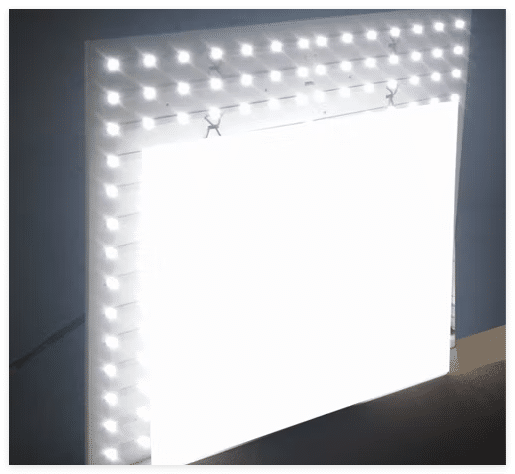
Finding the best van light bars can feel tricky, but it’s easier when you know what to look for. Let’s break it down step by step.
Compatibility with Vans
Not all lightbars fit every van. You need to check if the lightbar matches your van’s size and design. Some vans have curved roofs, while others are flat. A curved lightbar works better for rounded surfaces, while straight ones suit flat areas.
Think about your van’s electrical system too. Some lightbars need more power than your van can handle. Look for options that work with your van’s voltage. Many modern van light bars are designed to be plug-and-play, making installation simple.
Tip: Always check the manufacturer’s guide to ensure the lightbar is compatible with your van.
Mounting Space and Position
Where you mount the lightbar matters. Vans often have limited space, so you need to measure carefully. Roof-mounted lightbars are popular because they provide wide coverage. If you want something smaller, bumper-mounted options work well.
Adjustable mounts are a great choice. They let you change the direction of the light, which is handy for different tasks. Magnetic mounts are quick to install but might not stay secure in rough weather.
Callout: Measure twice before buying a lightbar to avoid surprises during installation.
IP Rating for Durability
Durability is key when choosing van light bars. The IP rating tells you how well the lightbar handles dust and water. For vans used outdoors, look for an IP rating of at least IP67. This means the lightbar can resist dust and survive being submerged in water.
Weather resistance is also important. If you drive in rainy or snowy conditions, pick a lightbar with seals to keep moisture out. A durable lightbar lasts longer and saves you money on replacements.
Note: Higher IP ratings mean better protection, but they can cost more. Balance your budget with your needs.
Why Brand and Quality Matter
When picking a rigid LED bar, brand and quality are key. They help ensure it works well and lasts long. Let’s see why these are important.
Trustworthy Brands
Good brands are more reliable. Famous companies spend money on making better lightbars. They also give better customer support. For example, Rigid Industries’ E-Series LED lightbars are better than halogen or HID ones:
Feature | Rigid Industries E-Series LED Light Bar | Competitors (Halogen/HID) |
|---|---|---|
LED Lifetime | Over 50,000 hours | Up to 1,000 hours |
Colour Consistency | High (custom LED binning) | Low (fades over time) |
Durability | Strong (resists shocks and vibrations) | Weak (fragile bulbs) |
Customer Service | Excellent (lifetime warranty) | Varies |
Efficiency | Low power use | High power at startup |
Choosing a trusted brand means your lightbar will last longer and work better.
Strong Build
The way a lightbar is made decides how tough it is. Look for materials like aluminium and polycarbonate. These materials fight rust and handle impacts. A strong lightbar works even in harsh conditions. Cheap ones break easily and cost more to replace.
Tip: Look for heat control and waterproof seals. These make the lightbar last longer and work better.
Certified Products
Certifications show the lightbar meets safety rules. Look for marks like CE, UKCA, and ROHS. These prove the product follows laws. Here’s a quick look at common certifications:
Certification/Standard | Description |
|---|---|
CE | CE safety approval. |
UKCA | UK safety approval. |
ROHS | Safe materials used. |
REACH | Follows chemical safety rules. |
WEEE | Meets waste recycling rules. |
IEC 62471 | Safe for eyes and skin. |
Certified lightbars are safer and show the maker cares about quality.
Warranty and Help
A good warranty shows the maker trusts their product. Look for lightbars with at least a one-year warranty. Some brands, like Rigid Industries, even offer lifetime warranties. Good customer service is also important. It helps you fix problems quickly.
Note: A strong warranty and helpful support save you money and stress later.
Practical Tips for Final Selection
Compare Reviews and Feedback
Before buying a lightbar, take time to read reviews. Look for feedback from people who’ve used the product in similar situations. For example, if you’re choosing van light bars, check reviews from van owners. They’ll give you insights into how well the light works and how easy it is to install. Online forums and social media groups are great places to find honest opinions.
Tip: Pay attention to comments about durability and brightness. These often reveal how the light performs over time.
Test Samples
If possible, test a sample before committing to a purchase. Many retailers let you try out their products. Testing helps you see the light’s brightness, beam pattern, and colour in real life. It also lets you check how well the lightbar fits your van or workspace.
Callout: Testing is especially important for van light bars. You’ll want to ensure they provide the right visibility for driving at night or in bad weather.
Budget Planning
Set a budget before you start shopping. Lightbars come in a wide range of prices, so it’s easy to overspend. Decide how much you’re willing to pay and stick to it. Remember, higher-priced options often offer better build quality and features.
Note: Don’t just focus on the upfront cost. Consider long-term savings from energy-efficient lights and durable designs.
Maintenance Considerations
Think about how easy it will be to maintain your lightbar. Some models need regular cleaning or replacement parts. Others are designed to last with minimal upkeep. Look for options with waterproof seals and rust-resistant materials. These features reduce maintenance and keep your light working longer.
Tip: For van light bars, choose models with strong mounting systems. This prevents wear and tear from vibrations during travel.
Picking the right lightbar might seem confusing at first. Focus on quality and how well it works to make it simpler. Choose reliable brands like Rigid Industries or Baja Designs. These brands offer strong and flexible options. Think about features that suit your needs, like beam patterns, mounts, or size. A good lightbar helps you see better and saves money over time.
Tip: Match your budget with durability and performance for the best deal.
FAQ
What is the difference between single-row and double-row LED bars?
Single-row bars are slim and less bright, ideal for compact spaces. Double-row bars offer more brightness and coverage, making them better for outdoor or vehicle use.
How do I know if an LED bar is waterproof?
Check the IP rating. Look for IP67 or higher for water resistance. This ensures the bar can handle rain or even brief submersion.
Tip: Higher IP ratings mean better protection but may cost more.
Can I install a rigid LED bar myself?
Yes, most LED bars come with user-friendly instructions. Plug-and-play designs make installation easy. For complex setups, consider hiring a professional.
Note: Always follow the manufacturer’s guide for safe installation.
See Also
Comparing Flexible Versus Rigid LED Strip Options
How To Install LED Light Bars For Signage
Five Essential Tips For Choosing Backlit Bar Signs
